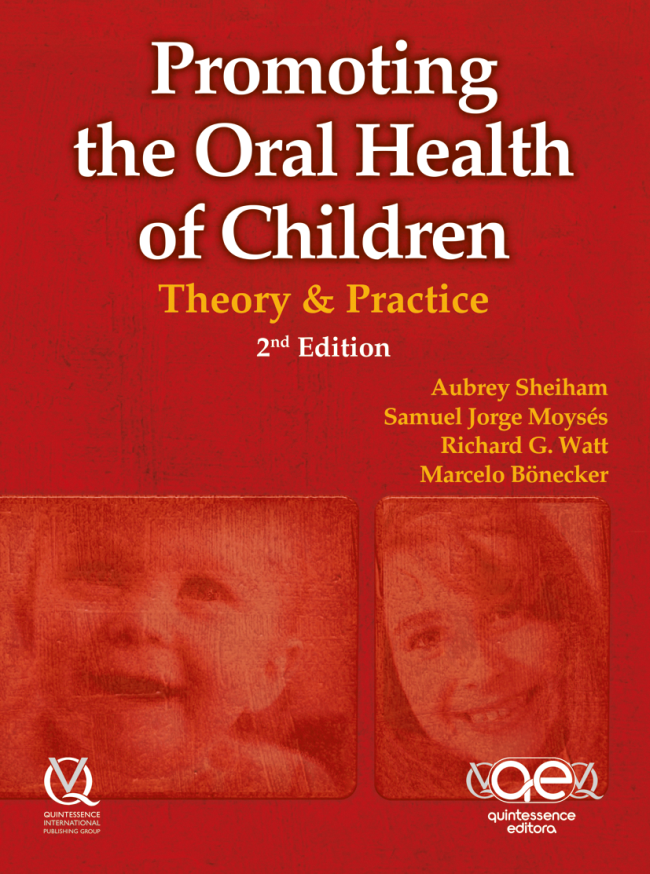Oral Health and Preventive Dentistry, 1/2006
DOI: 10.3290/j.ohpd.a11033, PubMed ID (PMID): 16683394Pages 7-18, Language: EnglishRamseier, Christoph A./Mattheos, Nikos/Needleman, Ian/Watt, Richard/Wickholm, SeppoOral Health and Preventive Dentistry, 1/2006
DOI: 10.3290/j.ohpd.a11034, PubMed ID (PMID): 16683395Pages 19-26, Language: EnglishWatt, Richard G./Benzian, Habib/Binnie, Viv/Gafner, Christine/Hovius, Marjoljin/Newton, Tim J./Mecklenburg, Robert E.Tobacco use is a significant public health problem across Europe. Each year over half a million Europeans die prematurely due to a smoking-related disease. Tobacco use is a primary cause of many oral diseases and adverse oral conditions. The prevalence of tobacco use varies considerably across Europe, although in many countries overall rates of use have declined in recent years. However, tobacco use among women and young people is rising in several European countries. Tobacco behaviour is influenced by an array of factors, and quitting is a major challenge for many tobacco users. Tobacco use is now considered a chronic progressive relapsing condition requiring very specific support and assistance. To reduce tobacco use across Europe, a range of complementary actions and policies are required at an international, national and local level. The WHO Framework Convention on Tobacco Control (FCTC) outlines an array of evidence-based policies that can be implemented to prevent tobacco use and promote cessation. National dental associations and professional groups across Europe have an important role to play in supporting the ratification and implementation of the FCTC. The aim of this paper is to outline the public health aspects of tobacco control and highlight how the oral health professions across Europe can become actively engaged in this important and relevant area of prevention.
Keywords: public health, tobacco control, oral health professions
Oral Health and Preventive Dentistry, 2/2004
DOI: 10.3290/j.ohpd.a9210Pages 95-102, Language: EnglishWatt, Richard G./McGlone, Pauline/Dykes, Joanna/Smith, MelvynTo assess the experience and attitudes of dental professionals towards smoking cessation and, in particular, to explore perceived barriers limiting their involvement in this area of practice.
A combined quantitative and qualitative methodology was employed in South Essex, an area in South East England. In the first phase a questionnaire survey was conducted with all general dental practitioners on the South Essex Health Authority dental list to assess their current involvement in smoking cessation and their general attitudes to this area of clinical care. In the second phase, ten focus group interviews were conducted with dental teams to uncover in greater depth views towards smoking cessation and, in particular, the barriers preventing progress.
A 60% response rate (n = 149) was achieved for the postal questionnaire and 52 dental team members participated in the focus groups. The questionnaire survey revealed that the majority of the sample reported asking their patients about smoking (90%) and recording this information in their clinical notes (75%). However, a relatively low number indicated active involvement in assisting smokers to stop (30%) or referring them for more detailed support (24%). The focus groups uncovered a range of fundamental barriers limiting greater involvement in smoking cessation. The key issues included a fatalistic and negative concept of prevention; perceived lack of relevance of smoking cessation to dentistry; patient hostility; and organizational factors within the practice setting.
Future action to encourage the provision of smoking cessation in dental practices needs to address the range of barriers that currently limit involvement in this area of clinical practice.
Keywords: smoking cessation, dentists, barriers





